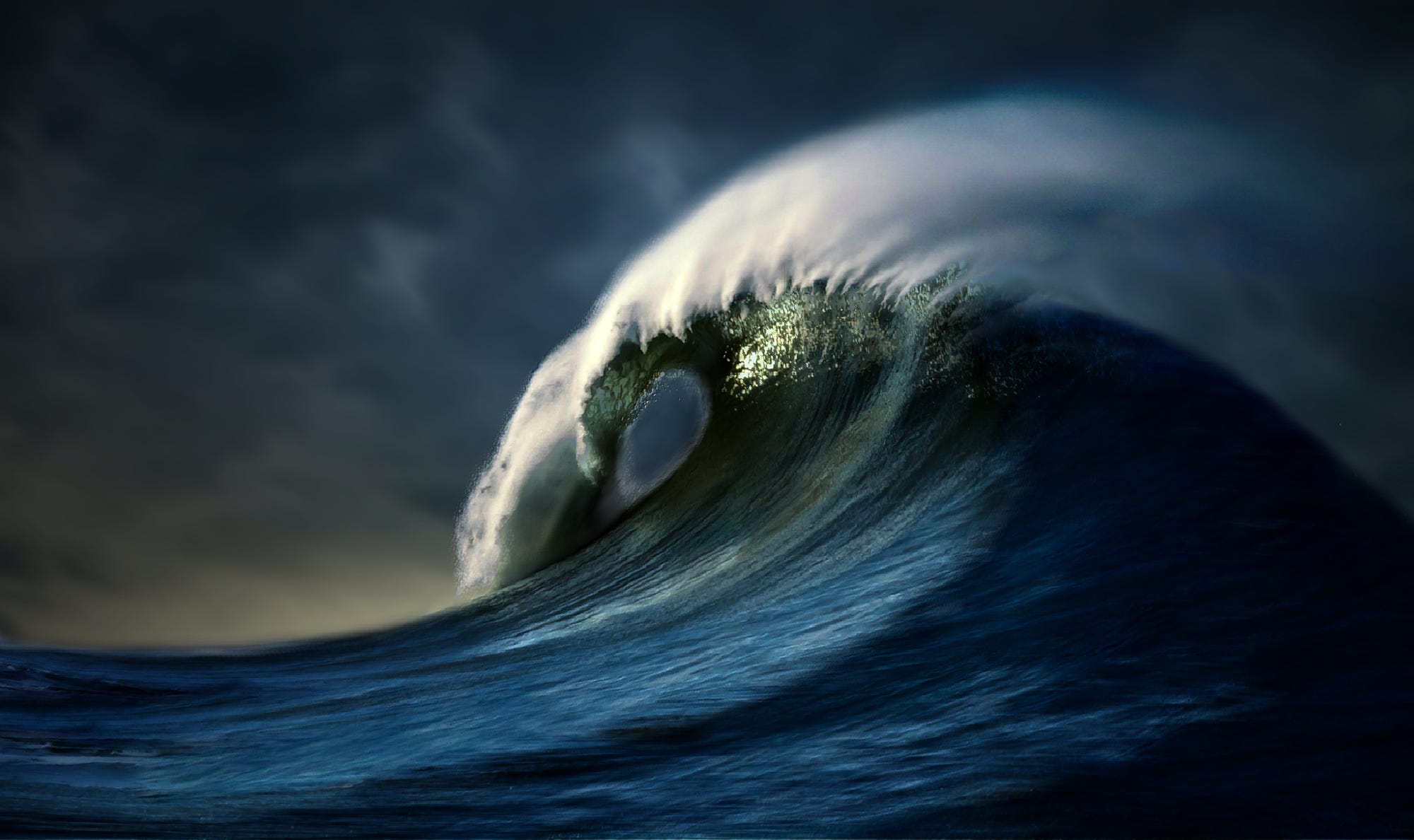

However, water does not actually travel in waves. Waves transmit energy, not water, across the ocean and if not obstructed by anything, they have the potential to travel across an entire ocean basin. Waves are created by energy passing through water, causing it to move in a circular motion. Whether observing from the beach or a boat, we expect to see waves on the horizon. Stay calm, a smaller set will appear and give you the chance to get back into control.The ocean is never still.
#ROUGH OCEAN WAVES HOW TO#
If it is, it’s better to turn and dive back under a breaking wave if you don’t know how to body-surf, or if the waves are particularly big or of the wrong type to body-surf safely. If the wave isn’t breaking, it’ll move you towards the shore. When making your way back to shore, swim and look back under one arm every stroke to see what’s coming. Learn the techniques for swimming through surf, including porpoising. Once you’re above waist-height in the water, swim over waves, or if they’re breaking, dive under them with your arms out in front to protect your neck. In the shallows as a general rule stand sideways on to a wave with your feet wide apart. When trying to negotiate waves it’s good to play around and learn how to deal with them. But because you’re buoyant, you will pop up to the surface. Because it runs along the bottom, if you’ve been pulled off your feet you’ll go with it. To be clear, it won’t pull you under, nor will it hold you under. This current runs along the bottom, seawards, beneath the incoming waves. It might be what’s meant by undertow, although this is a misleading name. This is the pull from waves returning from shore to sea. The danger of this type of wave is that it can pull people from quite high up the beach into the sea. These don’t seem to break in a dramatic way, but rather bulge and then suddenly surge up the beach far further than you expect. They are less steep than dumping waves, and the force pushes you along the surface so you can body-surf them.

These occur on more gently-sloping beaches, and tend to roll and grow before breaking gently from the top. And of course you then have to get back in through the shore break. They are also dangerous to weak swimmers because they will knock you off your feet and pull you out. The dangers of these include physical injuries, especially spinal fractures. In places where they break very close to the shore they are known as shore break. These waves rear up suddenly and break with great downward force the classic barrel or tube waves beloved of surfers are this type. Broadly the geomorphology of the beach determines the types of waves and vice versa. There are three main types of wave that you might encounter on a beach. Sometimes a set of unexpectedly large waves might come through. Waves on beaches tend to come in ‘sets’ or groups of several larger waves, interspersed with smaller waves.


 0 kommentar(er)
0 kommentar(er)
